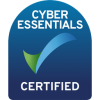To understand how best to use AI in the workplace, it is important to first understand how AI works. AI works by feeding a computer with a vast volume of data and encouraging it to use computer simulations of how our brains work to discern patterns. AI has, in fact, been around since the 1950s and has gone through successive cycles of boom and bust as scientists try to find ways to mimic the human brain.
What are the potential pitfalls?
Some companies have already adopted AI in recruitment as a tool to mitigate unconscious bias in the application and interview process, including suggesting interview questions and setting performance objectives. However, for every success, it is worth bearing in mind the associated risks. Training AI on the right data to ensure it isn’t biased is important; for example, industry studies show that when AI is asked to generate pictures of CEOs, they will still more than likely produce an image of a ‘white, middle-aged man.’
What does AI mean for staff?
Any business announcing that AI will be introduced across the workplace will likely see two responses: excitement or dread! Excitement partly because the implementation of AI can make people’s lives easier with mundane tasks such as sending out stock emails or analysing reams of data. The dread part normally comes in the form of people worrying that their jobs may become obsolete. Alleviating employee’s fears about the adoption of AI is important, and the rollout of the technology should be communicated proactively to all staff and ahead of time.
Five Steps to AI Success in the Workplace
- Check your needs—just because AI is the latest tool doesn’t mean that it is an ideal solution for everything. If you don’t need it, don’t use it.
- Communicate with staff—clearly outline the benefits and work to alleviate fears to help keep staff on board.
- Plan for the worst—think critically about the risks and pitfalls. Are you jeopardising business secrets? If so, stay away from commercial providers of AI tools.
- Prepare for the best – pinpoint the areas that can benefit most and provide adequate training on tools including adoption of company-wide policies on its’ use.
- Monitor performance – AI isn’t a guaranteed success story. Regularly check in with staff to find out whether it is making their jobs easier or harder.
How to develop a company-wide approach
It is important that HR teams consider what AI means on a broader spectrum. Should staff be allowed to use AI? Should they be encouraged to do so? What are the risks and rewards? Businesses need to implement an AI policy that dovetails with other relevant policies and procedures, such as data protection. There are always going to be challenges with new technology; it is just about navigating them successfully.
Our HR Growth Team at Howarths offers an excellent reactive service, supporting employers with a number of ‘hands-on’ HR issues. If you need any further support, please do not hesitate to contact us on 01274 864 999.
Written by Sally Mason, HR Growth Advisor.


